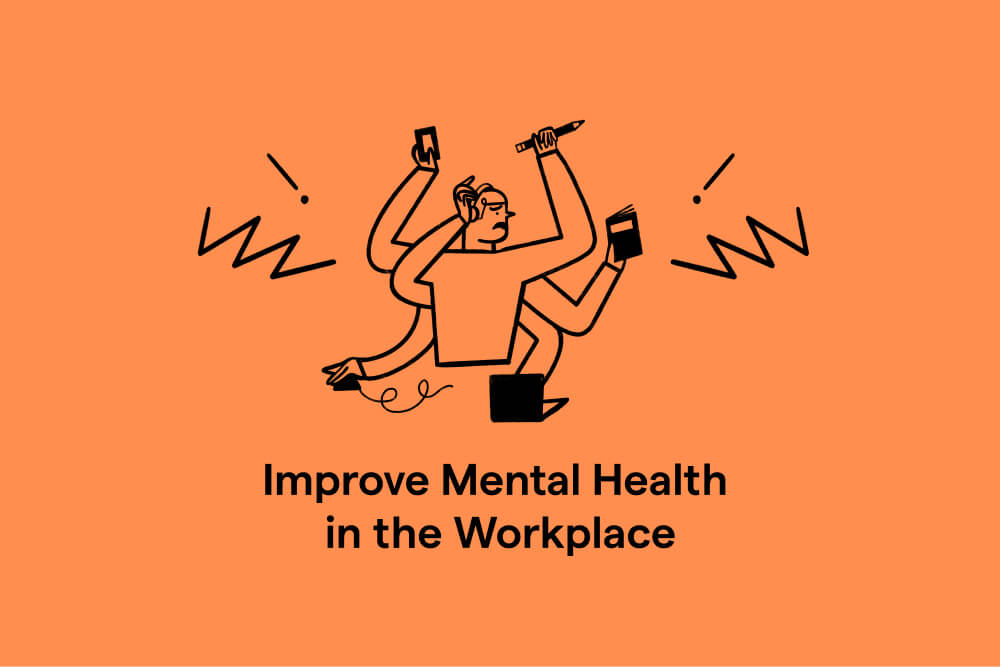
Individual
A self-facilitated program to boost your mental fitness for personal and professional growth
This website will offer limited functionality in this browser. We only support the recent versions of major browsers like Chrome, Firefox, Safari, and Edge.

Select the experience that fits your needs

A self-facilitated program to boost your mental fitness for personal and professional growth

A self-facilitated mental fitness program with exclusive pricing for 2 to 25 individuals

Explore coach-led mental fitness programs with workshops tailored to your organization
Mental Fitness

The economic cost of missed work is estimated at $47.6 billion annually in lost productivity, generalized across the U.S. workforce. Today’s workforce is, unfortunately, depleted, unmotivated, overly stressed, and overwhelmed. A study by Penn State, published in the Review of Regional Studies, showed that poor employee mental health costs the economy at least as much as poor physical health.
The most recent research, obtained in September 2022, is based on 15,809 U.S.-based working adults surveyed as part of the Gallup Panel—a probability-based, non-opt-in panel of about 115,000 adults across all 50 states and the District of Columbia.
According to the panel:
With the incidence of poor mental health cases related to work rising, so does the cost. The average employee takes off work unexpectedly, only 2.5 days annually. By contrast, those under severe mental strain take 12 days off each year, at an estimated $47.6 billion in lost productivity.
“Putting mental health at the center of workplace policies is more important than ever,” according to the American Psychological Association.
More and more, workers are turning to their employers to help them address their mental health concerns, according to the American Psychological Association’s 2022 Work and Wellbeing Survey.
Recently, global healthcare organizations have acknowledged the mental health crisis among healthcare workers, as well as the potential shortage of workers in the coming years. These organizations are calling on leaders to prioritize and promote mental health in the workplace through several new initiatives.
In the fall of 2022, the U.S. Surgeon General released the “Framework for Workplace Mental Health and Well-being,” reinforcing the role that workplaces play in supporting employee mental health and wellbeing. The World Health Organization issued a similar recommendation, identifying three areas of change that will significantly improve mental health at work.
New research found that a third of workers surveyed said their manager fails to recognize their own impact on others’ wellbeing. The study by The Workforce Institute at UKG, (which included 3,400 people across 10 countries) also revealed that:
Pay close attention to your daily interactions with employees, as well as the way you’re managing your own stress and workload daily, which can often impact others. Be mindful of supporting mental health both inside and outside the workplace as well. Focus on authenticity, vulnerability, and open communication to help employees feel supported.
Despite growing public recognition and acknowledgment of mental health issues, some organizations still carry a negative bias toward discussing these issues at work. However, according to Johann Berlin, CEO at TLEX Institute, organizations began trending toward “adaptive, empathetic, and connected culture” prior to the pandemic, which then brought the need for mindfulness practices to the forefront of workplace culture.
As a leader, you can encourage a culture of mindfulness by carving out time for mindfulness practice throughout the day and encouraging employees to do the same. Start each meeting with a few moments of mindfulness practice and allow for designated mindfulness breaks during the workday.
Empathy has positive impacts on innovation, engagement, and retention at work. As a leader, you can recharge your employees’ batteries and renew their vitality by showing empathy. When employees make mistakes or feel overwhelmed, their inner judge often becomes a harsh critic, impeding their ability to move forward in a positive direction.
Showing empathy for oneself is also critical in the workplace, especially when you feel rundown. An empathetic approach to getting your mental wellbeing back on track will set the stage for problem-solving action much more effectively than harsh inner criticism.
Leaders are often led to believe that success leads to happiness, not the other way around. However, the practice of mental fitness demonstrates that a happy brain is more capable, more creative, and more resourceful. Mental fitness training can be a catalyst for growth as well as a preventative measure in organizations, boosting employees’ empathy, optimism, adaptability, and overall wellbeing.
Through the Positive Intelligence® mental fitness training program, participants learn to maximize performance and wellbeing by focusing on the root-level mental muscles that impact both. The program also helps individuals and teams to raise emotional intelligence (EQ) by developing 17 out of the 18 EQ competencies. The result? Sustained improvements in performance, engagement, and relationships across individuals and organizations.
As a leader, it’s critical to look inward in order to mitigate the potential effects of poor employee mental health on your organization. Begin by recognizing your impact as a leader, providing opportunities for daily mindfulness, developing empathy for yourself and others, and incorporating a mental fitness training program to strengthen both individuals and teams within your organization.
Take the first step toward creating lasting positive change. The free Saboteur Assessment will help you and your team members identify the negative thought patterns (Saboteurs) that are impacting your performance, relationships, and wellbeing.

